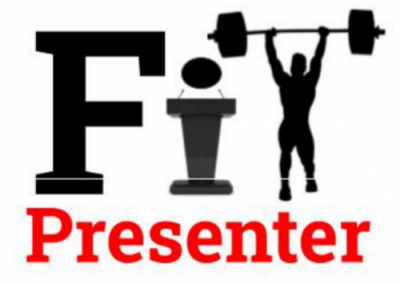You know Dr. Vinny Boombatz?
When Johnny Carson hosted the Tonight Show, guest comedians had to separate their routines into two parts. They performed their stand-up material, and then saved a few jokes for the sit-down segment with Johnny. In some cases, the seemingly “impromptu” conversation got more laughs than the official performance.
In public speaking, the same format applies. You end your prepared remarks, soak up the applause, and then the real presentation begins.
Questions, anyone?
Your audience will hopefully have questions before, during, and after your presentation. As your presentation is more of a dialog than the Gettysburg Address, the audience’s questions are every bit as important as your prepared comments.
The Q & A gives you time to add tidbits from your original speech that didn’t fit the central message, casually namedrop people, and pile on your credentials in a less boastful manner.

When all goes well, a Q&A session enhances the talk by allowing the audience members to contribute. It boosts interaction between you and your audience, and gives you a chance to cover material that you might have left out. You can tailor the information you share to the specific concerns of each group. However, it can also turn around to bite you.
During a Q & A session, you relinquish control of the room to your audience. What can possibly go wrong?
The usual suspects
The audience members can contribute or derail your presentation, depending on how you interact with them. As a lifelong disruptive student myself, I can assure you that noisemakers want to be a positive part of the presentation. Here’s a list of the usual suspects, and solutions to keep the event on point:
The rambler
If the venue is big enough to warrant a microphone, your questioner will likely be nervous when it’s their turn to speak. The question might not make any sense at all, and will also be long-winded. In this case, rephrase their question and confirm before answering. Once you articulate their thoughts better than they can, you win them over. As an example:
“I was wondering, like, a friend of mine wants to lose 30 pounds, and I told her, you know, you’re not really doing the right things, cause she keeps her diet books next to her cookbooks, and …”
You can respond with, “It sounds like you want to know what kind of advice to give your friend.” You will be amazed at how the tension leaves the room once you frame their question.

Captain obvious
Someone might ask a question that you have already answered. One option is to count down from three and have the audience yell, “DUH!” I recommend asking the audience. Let someone in the crowd answer the question. Once you get an answer, offer praise to the person who answered the question. If the questioner looks embarrassed for asking the question, respond with, “I’m glad you asked that question, since it’s a point worth repeating.”
The confronter
There are a lot of egos in the fitness industry, meaning that someone in the crowd will take great pride in disagreeing with you. In a sales situation, an objection is a buying signal. In a speaking venue, if an audience member postures up in disagreement, they are giving you an opportunity to win them over. Let’s say your talk is how you prefer functional training over bodybuilding. Somebody in your audience will challenge you and say that functional training is for wimps. The worst thing you can say is, “Well, that’s just your opinion” or “I’m sorry you feel that way.” It doesn’t work in marriage, and it doesn’t work with your audience.

Instead, you can say, “There’s no doubt that muscle building works for you. If your clients gravitate to it, and they don’t have the same mobility issues that my clients do, then more power to you.” Turn the objective into an opportunity. That questioner will leave the venue dying for a chance to take your words and make them his own.

Q & A formats
You also have to consider where to put the Q&A in your talk. In a classroom, you can answer questions as you present the same way a teacher does. With a larger audience, you have to be more strategic. The room is too big to answer to a show of hands, and the lineup behind the microphone that you see in university settings can be the kiss of death.
The collection
If you know that there will be a lot of questions, you can take all of the questions at once and take notes as they ask. Then you can answer them in bulk. You can also collect written questions throughout the presentation and answer at an appropriate time.
The break
In a full-day session, you can make yourself available for questions during breaks and then report the answers back to the group.
Mentimeter
If you are using a projector with internet access, you can let your audience submit questions via Menti. You need to set up a free Mentimeter account beforehand. Create a presentation and set for “Open-ended questions.” The audience can submit questions via their smartphones and they will appear on the screen. You can choose the best questions to answer.
No matter what Q & A format you use, finish with your own closing remarks. Never finish with, “Okay, that’s the last of the questions, thank you very much.” With practice, you can identify the question that segues into your closing. Remember, you always want to have the last word.














I’m from Brazil, but i translated the text and loved it now i’m going to study more about it excellent blog, i recommend it to everyone i learned a lot.
Congratulations on the site, also know mine:
https://strelato.com
.